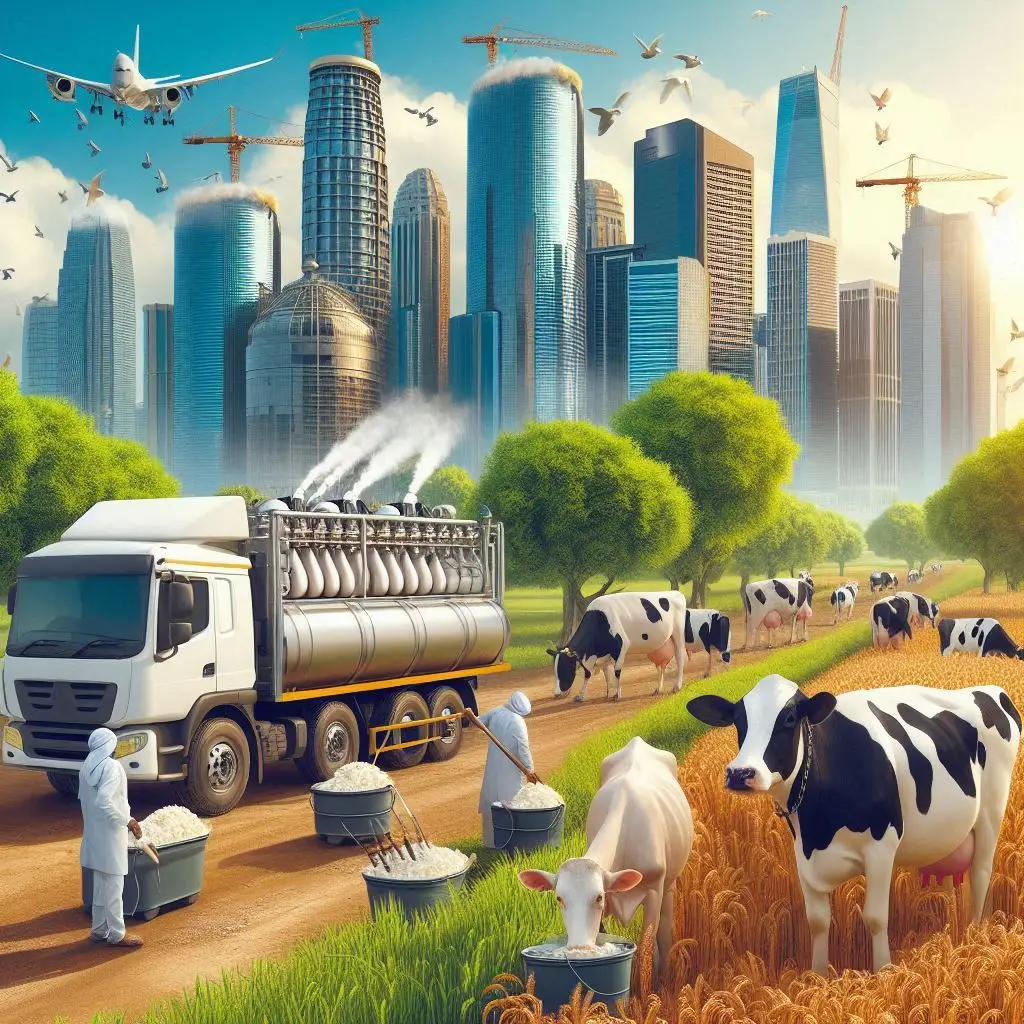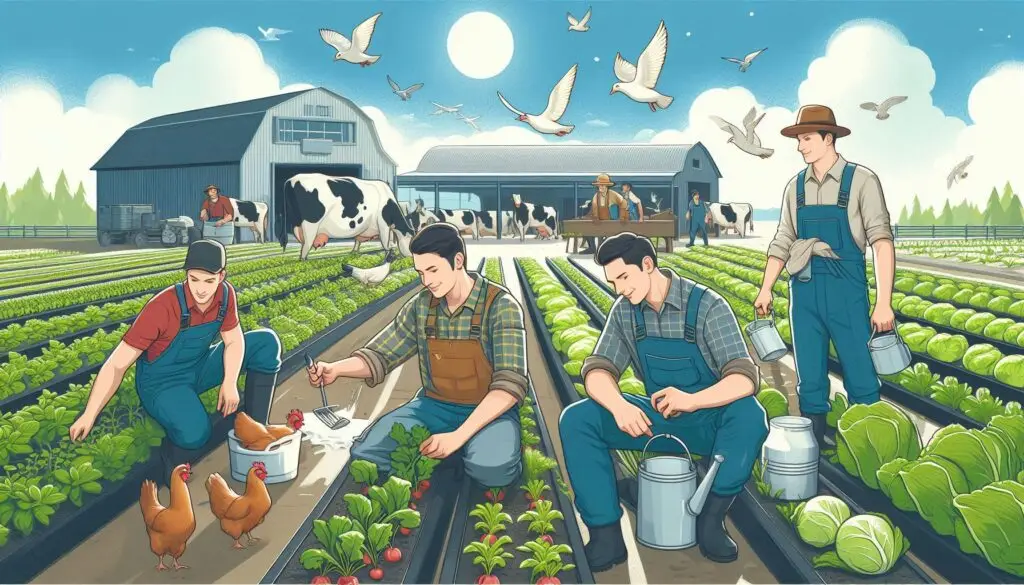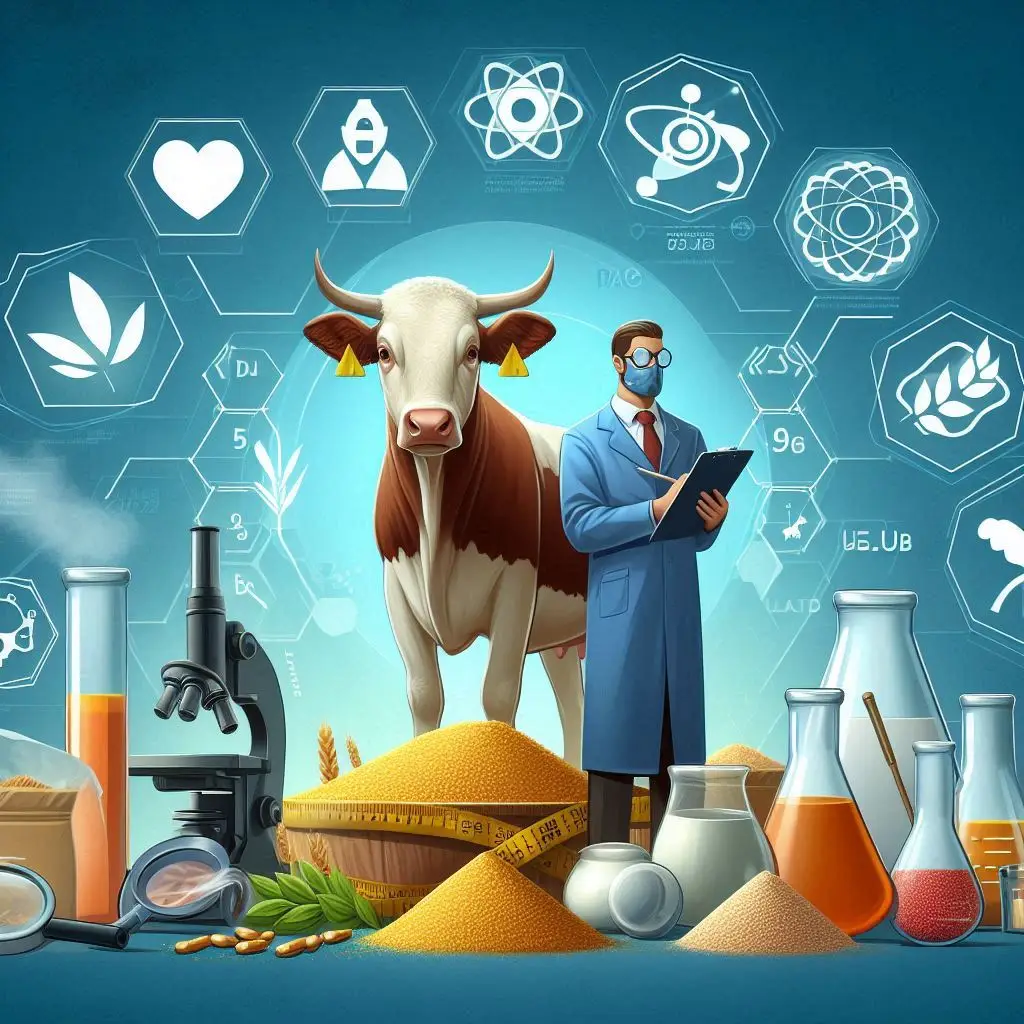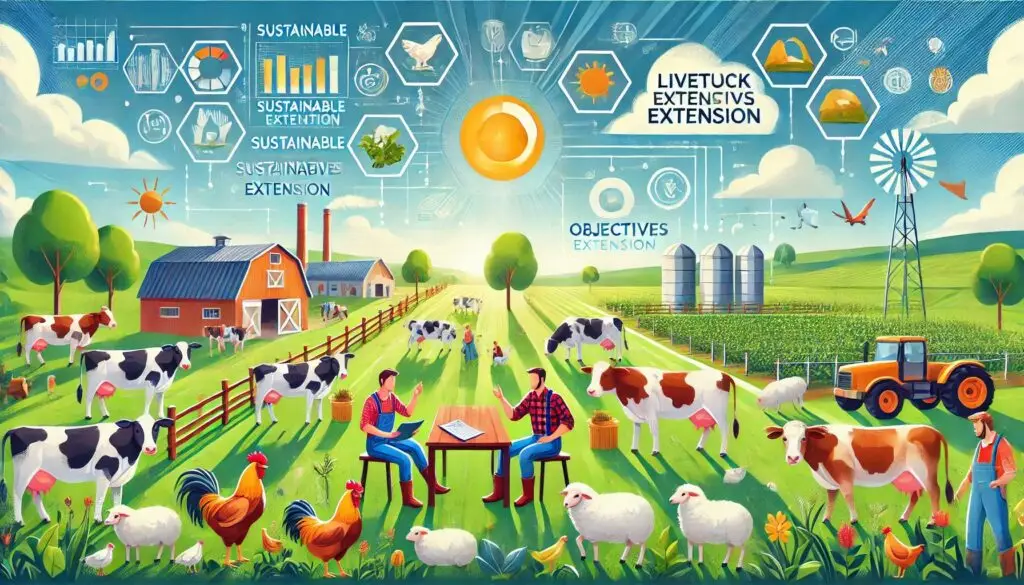Dairying under mixed farming and as specialised farming, Economic dairy farming

Introduction
Dairy farming plays a vital role in the global food system, contributing to food security, economic development, and the livelihoods of millions of people worldwide. As the demand for dairy products continues to grow, dairy farmers must adapt their production systems to meet these challenges while ensuring economic viability and environmental sustainability. This article examines the economic aspects of two primary dairy farming systems: mixed farming and specialized farming, highlighting the advantages, productivity, and financial results of each approach.
Mixed Dairy Farming Systems
Mixed farming systems integrate crop production and livestock raising, with dairy farming often being a significant component. This system offers several advantages:
Resource Utilization
Mixed farming allows for better utilization of land, labor, and capital. By integrating dairy with crop production, farmers can use byproducts from crops as feed for livestock, enhancing overall farm efficiency.
Income Stability
Mixed farming provides a continuous income stream throughout the year, as crop and dairy production cycles can complement each other. This diversification reduces financial risk associated with market fluctuations in either sector.
Soil Fertility Maintenance
The inclusion of livestock in farming systems helps maintain soil fertility through manure application, which can improve crop yields over time.
Economic Performance
Studies indicate that mixed farming systems often outperform specialized dairy farms economically. For instance, mixed systems can achieve higher gross margins due to the inclusion of arable crops, which tend to have higher market prices compared to milk.
Risk Reduction
By diversifying production, mixed farming lowers the risks associated with crop failures or unstable market prices, making it a more resilient farming strategy.
Specialized Dairy Farming Systems
In contrast, specialized dairy farming focuses predominantly on milk production, deriving 50% or more of its income from dairy activities. This system has its own set of advantages:
Operational Efficiency
Specialized farms can streamline operations, focusing on the specific needs of dairy production, which can lead to enhanced productivity and management efficiency.
Market Focus
Specialization allows farmers to concentrate on marketing their dairy products, potentially leading to better prices and market positioning for high-quality milk.
Higher Yields
Specialized dairy farms often achieve higher milk yields per hectare due to targeted breeding and feeding practices, which can lead to increased profitability per unit of land compared to mixed systems.
Cost Management
With a focus on dairy, these farms can invest in specialized equipment and practices that enhance production efficiency, although they may face higher risks from market volatility and production failures.
Productivity and Financial Results
The productivity and financial performance of mixed and specialized dairy farming systems are crucial factors in determining their economic viability.
Productivity
A study conducted in Cuba found that the conversion of specialized dairy farms into mixed farming systems resulted in higher productivity per unit of farm area. This was attributed to the inclusion of arable crops and the beneficial interactions between crop and livestock production.
Financial Results
The same study showed that the two mixed farming systems achieved higher gross margins and benefit-cost ratios compared to the specialized dairy farm. This was due to the inclusion of arable crops, the high productivity per unit farm area, and the higher prices for crop products than for milk and meat.However, the total costs of production were also higher in the mixed systems, associated with the higher labor costs and capital demand to establish the crop production activities. Despite these higher costs, the financial advantages of mixed farming systems can make dairy farming more attractive and support cattle operations in regions where arable farming is possible.
Challenges and Considerations
While both mixed and specialized dairy farming systems offer economic advantages, they also face challenges and considerations:
Lack of Incentives and Centralized Decisions
In some regions, lack of incentives and centralized top-down decisions can constrain the development of the dairy sector. For example, in Cuba, the price of milk for consumers in vulnerable sectors is set by the government, while the producer price is low, making milk production a low-income activity that is not economically attractive for producers.
Environmental Damage and Input Costs
In low external input dairy farming systems, reducing the cost price of milk is difficult. However, in mixed farming systems, milk production tends to become more feasible when combined with other highly profitable activities such as cash crop and fruit production.
Uneconomic Land Holdings and Lack of Access to Inputs
Small and marginal farmers may face challenges in carrying out dairy farming on profitable lines due to uneconomic land holdings, inaccessibility of production inputs, and lack of extension education. Strategies to improve the income and employment potential of these farmers include community management of waste land to produce fodder, provisions of credit and marketing facilities, and the provision of free veterinary facilities, dairy education, and extension services.
Conclusion
The choice between mixed and specialized dairy farming systems depends on various factors, including location, market access, available resources, and the specific goals and circumstances of the farm. While specialized dairy farming can achieve higher yields and operational efficiency, mixed farming systems offer economic advantages in terms of income stability, risk reduction, and financial performance.
For more pearls of Vets Wisdom:





Responses